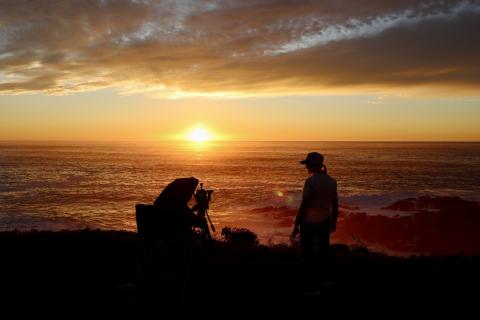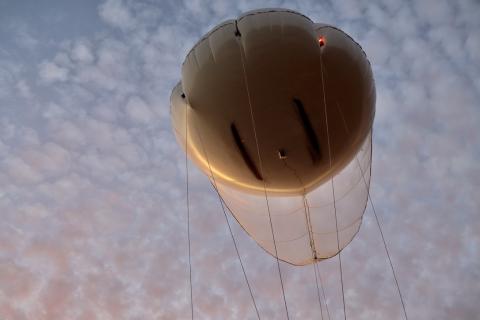Marine Wildlife Detection and Tracking
The ability to capture photographs and videos using unoccupied aerial platforms, such as tethered balloon systems, provides unique opportunities for researchers to collect data about whales and other marine wildlife from the air for longer durations. Tethered balloons are often used to deploy research equipment for climate and atmospheric science monitoring. Triton worked to adapt this technology for environmental monitoring using a suite of sensor technology applications to detect and track marine wildlife in and above the water for marine energy applications.
Triton’s Marine Wildlife Detection and Tracking Project was a collaboration with Sandia National Laboratories to validate a sensor package and tethered balloon system for marine energy applications. The sensor package included a multispectral sensor, which captures data concerning the reflection of light energy off objects in the environment, allowing researchers to evaluate and process data necessary for wildlife detection above and below the water’s surface. Additionally, two types of thermal cameras were used to detect heat signatures, like whale breaths or sea otters floating on the surface of the waves. The package also included a camera used to validate these sensors. These optical sensors were attached to the tether of an aerostat balloon and deployed during multiple field tests.
Read the paper: Validating a Tethered Balloon System and Optical Technologies for Marine Wildlife Detection and Tracking
Detecting Marine Wildlife in Carmel, California
After the initial validation tests in Texas, the project team conducted real-time monitoring of marine wildlife at sea at the National Oceanic and Atmospheric Administration (NOAA) Southwest Fisheries Science Center’s Granite Canyon field site near Carmel, California.
The team deployed the tethered balloon system in varying conditions with the objective of evaluating the tethered balloon system as a viable long-term monitoring technology for marine wildlife at offshore energy sites. During this effort, the team collected nearly 50 hours of imagery data, capturing a diverse array of marine life including gray whales, dolphins, harbor seals, sea otters, and numerous seabirds.


Data from these deployments helped train artificial intelligence and machine learning programs developed by Toyon Research Corporation to detect and track marine wildlife in ocean habitats. Tools like these can be used where marine energy devices may be deployed and can build knowledge around the potential movement and behavior of animals in relation to these devices.
The Marine Wildlife Detection and Tracking Project represents a successful application for integrating commercial sensor technology with innovative platforms. Read the paper, titled “Enhancing marine wildlife observations: the application of tethered balloon systems and advanced imaging sensors for sustainable marine energy development.”